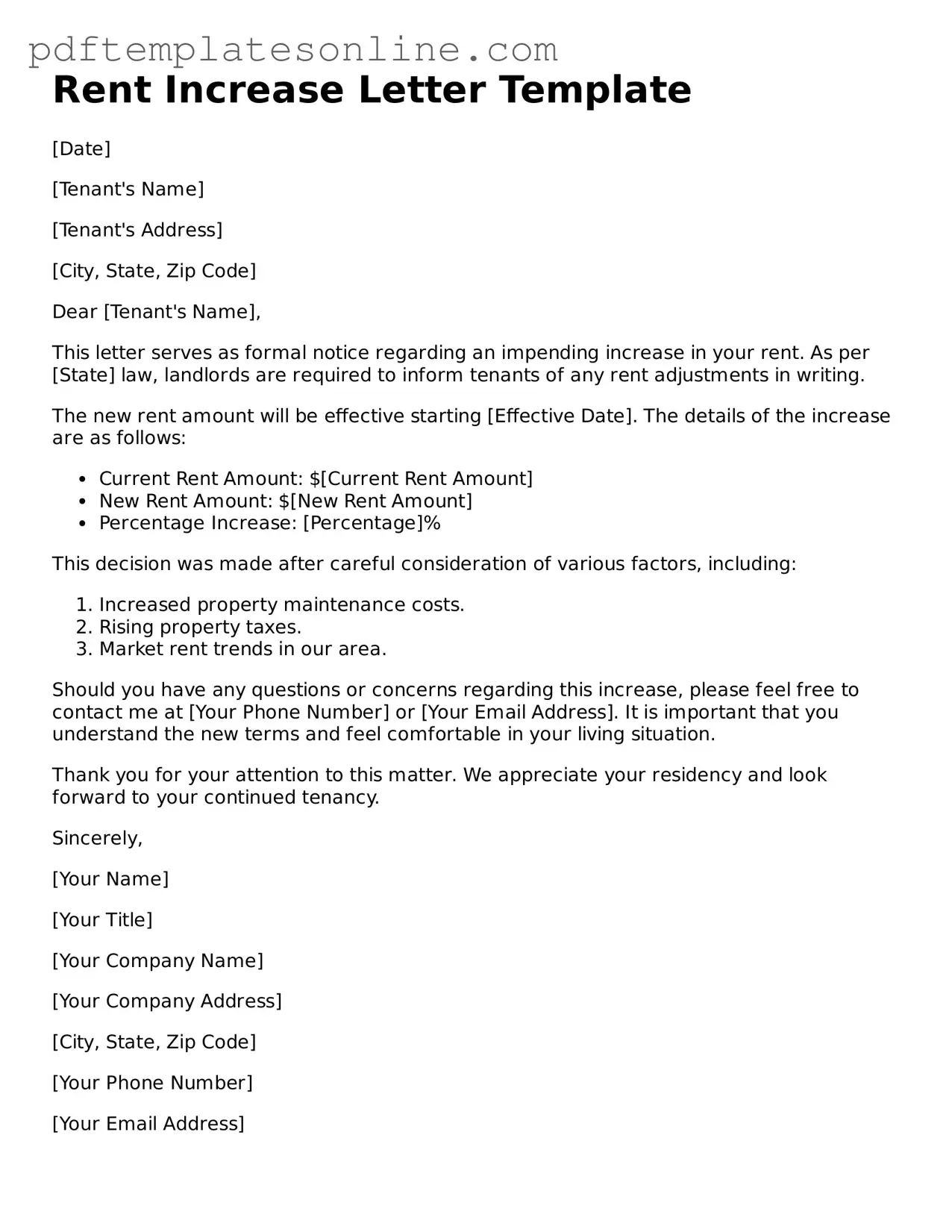Filling out a Rent Increase Letter form can seem straightforward, but many people make common mistakes that can lead to confusion or delays. Understanding these pitfalls can help ensure a smoother process for both landlords and tenants.
One frequent mistake is not providing accurate information. This includes failing to list the correct address of the rental property or omitting important details about the tenant. Inaccurate information can create misunderstandings and may even render the letter invalid.
Another common error is failing to follow local laws. Each state and municipality has specific regulations regarding rent increases, including how much notice must be given and the maximum allowable increase. Ignoring these laws can result in legal complications down the line.
Some people also overlook the importance of clarity in communication. A rent increase letter should clearly state the new rent amount, the effective date of the increase, and any reasons for the increase if required by law. Vague language can lead to confusion and disputes.
Additionally, neglecting to sign the letter is a simple yet significant mistake. A signature indicates that the landlord is formally communicating the rent increase. Without it, the letter may not be taken seriously or could be considered incomplete.
Many individuals fail to provide adequate notice before implementing a rent increase. Depending on local laws, landlords may be required to give tenants a specific amount of notice—often 30 or 60 days. Not adhering to this requirement can result in a tenant disputing the increase.
Another oversight involves not keeping a copy of the letter. It’s essential for landlords to retain a copy of the rent increase letter for their records. This documentation can be invaluable in case of future disputes or misunderstandings with the tenant.
Some landlords also forget to consider the timing of the rent increase. Announcing an increase during a particularly difficult economic period can lead to resentment or push tenants to seek housing elsewhere. Timing can significantly impact tenant retention.
Lastly, failing to be professional in tone can be detrimental. While it’s important to communicate the increase, maintaining a respectful and professional tone can foster goodwill and help maintain a positive landlord-tenant relationship.
